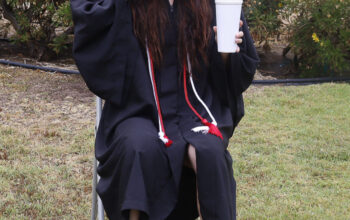With Halloween just around the corner, many children are looking forward to dressing up in fun costumes and going trick-or-treating.
However, according to the National Public Radio, children below the age of 12 are ineligible to receive the COVID-19 vaccine. It is unlikely that the vaccine for this age group will be approved before Oct. 31, as the FDA independent advisory committee meeting is scheduled Oct. 26 and the CDC’s independent advisory committee meeting is scheduled Nov. 2 and Nov. 3.
If the vaccine gets approved before Oct. 31, children will still not be fully vaccinated by then since the vaccine takes several weeks to reach its full effect.
Although severe illness or death from COVID-19 is uncommon for children under the age of 12, according to the Los Angeles Times, trick-or-treating opens up several opportunities for transmission of the coronavirus.
Trick-or-treating is often done with lots of friends or large groups. When large groups of children or children from different households trick or treat together, there is more contact with people and there is a higher chance that a group member may carry the virus and be asymptomatic.
During and after trick-or-treating, children are often eager to rip open candy wrappers and start snacking on their treats. Some children even like to swap and compare candies with each other. Without proper hand washing or disinfecting of possibly contaminated surfaces, the coronavirus can easily be transmitted from child to child when eating or swapping candy.
Many individuals who enjoy handing out candy will allow children to grab handfuls from their bowl. This opens up an opportunity for the virus to be spread when each child puts their hand in the bowl.
Halloween is also a holiday where wearing face masks cannot be enforced. There is no guarantee that every person who gives out candy is vaccinated or will wear a mask when trick-or-treaters show up at their door.
Even those who hand out candy and are fully vaccinated can still transmit the virus to trick-or-treaters. These breakthrough cases are more likely to occur with the Delta variant, according to the Centers for Disease Control and Prevention.
Despite trick-or-treating being an outdoor activity, many children may still struggle with social distancing on Halloween. From being surrounded by other children on a stranger’s porch to pushing each other out of the way to get the best candy, children will often come into physical contact with each other and strangers.
After the night of festivities is over, children will return home with their candy, but they also may return home with the coronavirus. While some individuals who catch a case of COVID-19 are asymptomatic, they can still transmit the virus to others.
With COVID cases decreasing in the United States, celebrating Halloween by trick-or-treating does not seem to pose much of a threat. Yet, without taking the proper precautions and with millions of children being unvaccinated, transmission and the rise of the virus are still a possibility.



